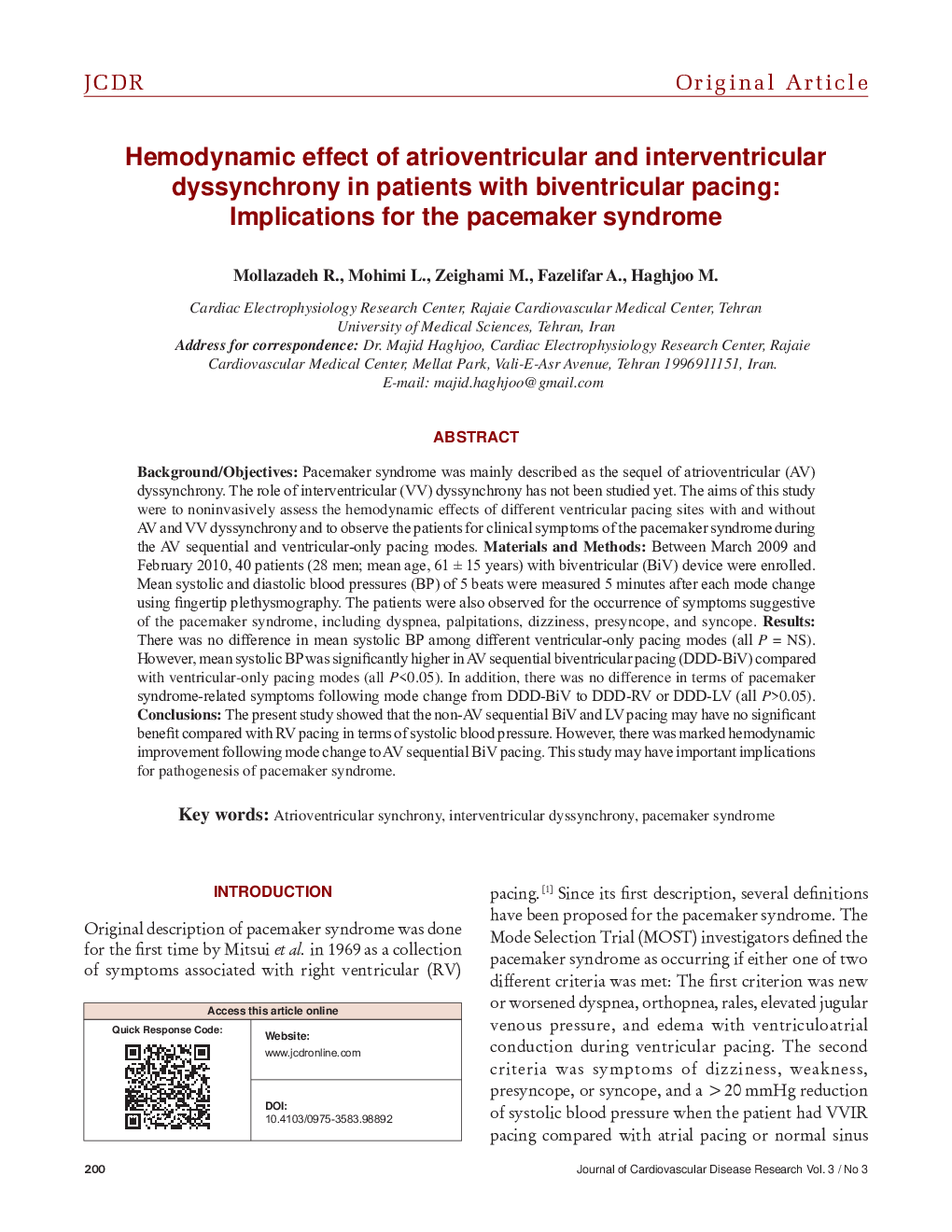| کد مقاله | کد نشریه | سال انتشار | مقاله انگلیسی | نسخه تمام متن |
|---|---|---|---|---|
| 2965517 | 1178752 | 2012 | 4 صفحه PDF | دانلود رایگان |
عنوان انگلیسی مقاله ISI
Hemodynamic effect of atrioventricular and interventricular dyssynchrony in patients with biventricular pacing: Implications for the pacemaker syndrome
دانلود مقاله + سفارش ترجمه
دانلود مقاله ISI انگلیسی
رایگان برای ایرانیان
موضوعات مرتبط
علوم پزشکی و سلامت
پزشکی و دندانپزشکی
کاردیولوژی و پزشکی قلب و عروق
پیش نمایش صفحه اول مقاله

چکیده انگلیسی
Background/Objectives: Pacemaker syndrome was mainly described as the sequel of atrioventricular (AV) dyssynchrony. The role of interventricular (VV) dyssynchrony has not been studied yet. The aims of this study were to noninvasively assess the hemodynamic effects of different ventricular pacing sites with and without AV and VV dyssynchrony and to observe the patients for clinical symptoms of the pacemaker syndrome during the AV sequential and ventricular-only pacing modes. Materials and Methods: Between March 2009 and February 2010, 40 patients (28 men; mean age, 61 ± 15 years) with biventricular (BiV) device were enrolled. Mean systolic and diastolic blood pressures (BP) of 5 beats were measured 5 minutes after each mode change using fingertip plethysmography. The patients were also observed for the occurrence of symptoms suggestive of the pacemaker syndrome, including dyspnea, palpitations, dizziness, presyncope, and syncope. Results: There was no difference in mean systolic BP among different ventricular-only pacing modes (all P = NS). However, mean systolic BP was significantly higher in AV sequential biventricular pacing (DDD-BiV) compared with ventricular-only pacing modes (all P < 0.05). In addition, there was no difference in terms of pacemaker syndrome-related symptoms following mode change from DDD-BiV to DDD-RV or DDD-LV (all P > 0.05). Conclusions: The present study showed that the non-AV sequential BiV and LV pacing may have no significant benefit compared with RV pacing in terms of systolic blood pressure. However, there was marked hemodynamic improvement following mode change to AV sequential BiV pacing. This study may have important implications for pathogenesis of pacemaker syndrome.
ناشر
Database: Elsevier - ScienceDirect (ساینس دایرکت)
Journal: Journal of Cardiovascular Disease Research - Volume 3, Issue 3, JulyâSeptember 2012, Pages 200-203
Journal: Journal of Cardiovascular Disease Research - Volume 3, Issue 3, JulyâSeptember 2012, Pages 200-203
نویسندگان
R. Mollazadeh, L. Mohimi, M. Zeighami, A. Fazelifar, M. Haghjoo,